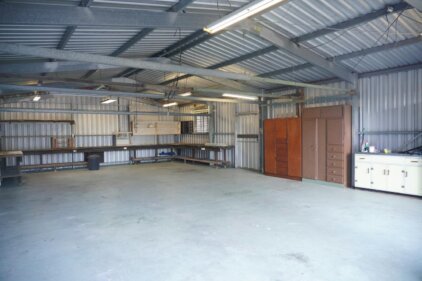Benefits of Community-Led Housing Projects
Community-led housing projects offer numerous benefits to both individuals and the wider community. Firstly, they provide affordable housing options for those who may otherwise struggle to find suitable accommodations. By cutting out the middleman and involving the community directly in the planning and development process, costs can be significantly reduced. This allows for the creation of housing that is affordable for a range of income levels.
Secondly, community-led housing projects foster a sense of ownership and belonging among residents. When individuals are actively involved in the planning and decision-making processes, they develop a deeper connection to their homes and the surrounding community. This sense of ownership often leads to increased pride in the neighborhood, stronger social ties, and a greater commitment to maintaining the quality of the housing.
Lastly, community-led housing projects have the potential to enhance the overall quality of life in a neighborhood. By prioritizing sustainability and environmentally-friendly practices, these projects can reduce their carbon footprint and promote a healthier living environment. Additionally, community-led initiatives often include shared spaces and amenities that encourage social interaction, further strengthening community bonds.
Examples of Successful Community-Led Housing Projects
One inspiring example of a successful community-led housing project is the Lilac Grove in Leeds, United Kingdom. This project was initiated by local residents who were determined to create an affordable and sustainable housing development. Through a community land trust model, the residents were able to secure the land and design a development that met their needs. The Lilac Grove now consists of 20 eco-friendly homes, built to high energy-efficiency standards, with shared communal spaces and gardens.
Another notable example is the Breathe Easy Homes project in Portland, Oregon. This initiative was spearheaded by a group of community activists who recognized the need for affordable housing for low-income individuals and families. The Breathe Easy Homes project focuses on building energy-efficient homes that prioritize clean indoor air quality. Through partnerships with local organizations and government support, the project has successfully provided affordable, healthy, and sustainable housing to those in need.
These examples highlight the power of community-led housing projects in addressing the pressing issues of housing affordability and sustainability. By empowering communities to take charge of their housing needs, these initiatives create positive change and demonstrate alternative models for housing development.
The Role of Community Engagement in Community-Led Housing Projects
Community engagement plays a crucial role in the success of community-led housing projects. It is essential to involve residents from the outset, ensuring their voices are heard and their needs are met. By actively engaging the community in the decision-making process, projects can benefit from local knowledge, expertise, and a shared sense of responsibility.
Effective community engagement begins with open and transparent communication. Regular community meetings, workshops, and consultations provide opportunities for residents to share their ideas, concerns, and aspirations. These platforms also allow project organizers to provide updates, address any issues, and ensure that the project aligns with the community’s vision.
Furthermore, community engagement fosters a sense of ownership and a collective responsibility for the success of the project. When individuals are actively involved in the planning and development process, they become invested in the outcome. This engagement can lead to increased community cohesion, as residents work together to create a neighborhood that meets their collective needs and aspirations.
It is important to note that community engagement is an ongoing process. Regular communication and collaboration should continue beyond the initial planning stages to ensure that the community remains engaged and involved in the long-term management and maintenance of the housing project.
Financing Options for Community-Led Housing Projects
While financing can be a significant challenge for community-led housing projects, there are various options available to secure the necessary funds. One common approach is through community shares or co-operative ownership. In this model, residents and community members invest in the project by purchasing shares, which provide the capital needed for land acquisition and construction costs. The investors then become shareholders and have a say in the decision-making process.
Grants and loans from government bodies, charitable organizations, and foundations are also valuable sources of funding for community-led housing projects. These financial institutions often prioritize projects that demonstrate a commitment to affordable and sustainable housing. It is essential for project organizers to research and apply for these funding opportunities to maximize financial support.
Collaboration with local authorities and housing associations can also provide financial support and expertise. Public-private partnerships can be formed to leverage resources and secure funding. By working together, community-led housing projects can access additional financial resources and utilize the expertise and experience of established housing organizations.
Lastly, crowdfunding platforms have become a popular tool for community-led housing projects to raise funds. By appealing to a wider audience, these projects can attract individual donations from those who believe in their mission. Crowdfunding not only provides financial support but also helps generate awareness and build a network of supporters.
Creating a Sustainable and Affordable Living Environment through Community-Led Housing Projects
Community-led housing projects have a unique opportunity to prioritize sustainability and affordability. By involving the community directly in the decision-making process, projects can ensure that environmental considerations are at the forefront of the development. Here are some strategies that community-led housing projects can employ to create a sustainable and affordable living environment:
- Energy-efficient design: Incorporate energy-efficient features such as solar panels, insulation, and efficient heating and cooling systems to reduce energy consumption and lower utility costs for residents.
- Sustainable materials: Use environmentally-friendly materials that have a low carbon footprint and promote resource efficiency. This includes sourcing local and recycled materials whenever possible.
- Community gardens and green spaces: Create shared gardens and green spaces that promote biodiversity, improve air quality, and provide opportunities for residents to grow their own food.
- Rainwater harvesting and greywater recycling: Implement systems to collect rainwater for irrigation purposes and recycle greywater for non-potable uses, reducing the strain on municipal water supplies.
- Affordable rent and ownership models: Explore innovative rent and ownership models that prioritize affordability, such as community land trusts or co-operative ownership, to ensure that housing remains accessible to a range of income levels.
By integrating these strategies into community-led housing projects, neighborhoods can become models of sustainability and affordability, offering residents a high quality of life while minimizing their environmental impact.
Challenges and Solutions in Community-Led Housing Projects
While community-led housing projects offer numerous benefits, they also face various challenges that can hinder their success. One common challenge is securing suitable land for development. The rising cost of land and competition from commercial developers often make it difficult for community-led initiatives to find accessible and affordable sites. However, partnerships with local authorities and landowners, as well as utilizing government support and grants, can help overcome this obstacle.
Another challenge is navigating the complex planning and regulatory processes. Community-led housing projects often face bureaucratic hurdles that can delay or impede progress. Engaging with local planning authorities and seeking expert advice can help navigate these processes effectively. Building strong relationships with local councils and demonstrating the community’s commitment to sustainable and affordable housing can also help build support and overcome regulatory challenges.
Additionally, ensuring long-term sustainability and affordability can be a challenge. It is important to develop robust financial and management plans to ensure that the project remains financially viable and well-maintained in the long run. Ongoing community engagement and collaboration can help address these challenges, as residents work together to find creative solutions and adapt to changing circumstances.
Government Support for Community-Led Housing Projects
Recognizing the importance of community-led housing projects, many governments around the world have taken steps to support and encourage these initiatives. Governments provide financial support through grants, loans, and funding programs specifically designed for community-led housing projects. They also offer technical assistance, such as access to planning experts and legal advice, to help navigate the complexities of the development process.
In addition to financial and technical support, governments can create favorable policy environments that facilitate community-led housing projects. This includes streamlining planning processes, providing exemptions or incentives for sustainable development practices, and ensuring that land is made available for community-led initiatives. Governments can also promote collaboration between community groups and housing associations to leverage resources and expertise.
By working in partnership with governments, community-led housing projects can benefit from increased financial support, reduced regulatory barriers, and a supportive policy framework that enables the growth and sustainability of these initiatives.
Resources and Organizations Supporting Community-Led Housing Projects
Numerous resources and organizations exist to support and guide community-led housing projects. These organizations provide valuable information, advice, and networking opportunities for project organizers and residents. Some notable resources and organizations include:
- Community Land Trusts: Community Land Trusts are nonprofit organizations that support the development of affordable housing through the community ownership of land. They provide guidance, resources, and legal frameworks for community-led housing projects.
- National Community Land Trust Network (UK): The National Community Land Trust Network in the UK is a membership organization that supports community-led housing initiatives. They provide access to resources, training, and networking opportunities for individuals and organizations involved in community-led housing.
- Co-operative Housing International: Co-operative Housing International is an international federation that promotes co-operative housing as a sustainable and affordable housing solution. They provide resources, training, and advocacy for community-led housing projects worldwide.
- Local Government Associations: Local Government Associations often provide support and guidance to community-led housing projects. They can offer access to funding, expertise, and networking opportunities. It is advisable to reach out to the local government association in your area to explore available resources and support.
These resources and organizations can be invaluable in helping community-led housing projects navigate the complexities of planning, financing, and development, and maximize their impact.
Conclusion: The Future of Community-Led Housing Projects
Community-led housing projects are a powerful tool for empowering communities, addressing housing affordability, and creating sustainable living environments. By involving residents in the decision-making process, these initiatives foster a sense of ownership, strengthen community bonds, and promote social and environmental sustainability. While challenges exist, governments and organizations are increasingly recognizing the importance of community-led housing projects and providing support and resources.
As the demand for affordable and sustainable housing continues to grow, community-led initiatives have the potential to reshape the housing landscape and create inclusive and thriving neighborhoods. By uniting for affordable and sustainable living, communities can take control of their housing needs and build a future that prioritizes the well-being of individuals and the planet.





